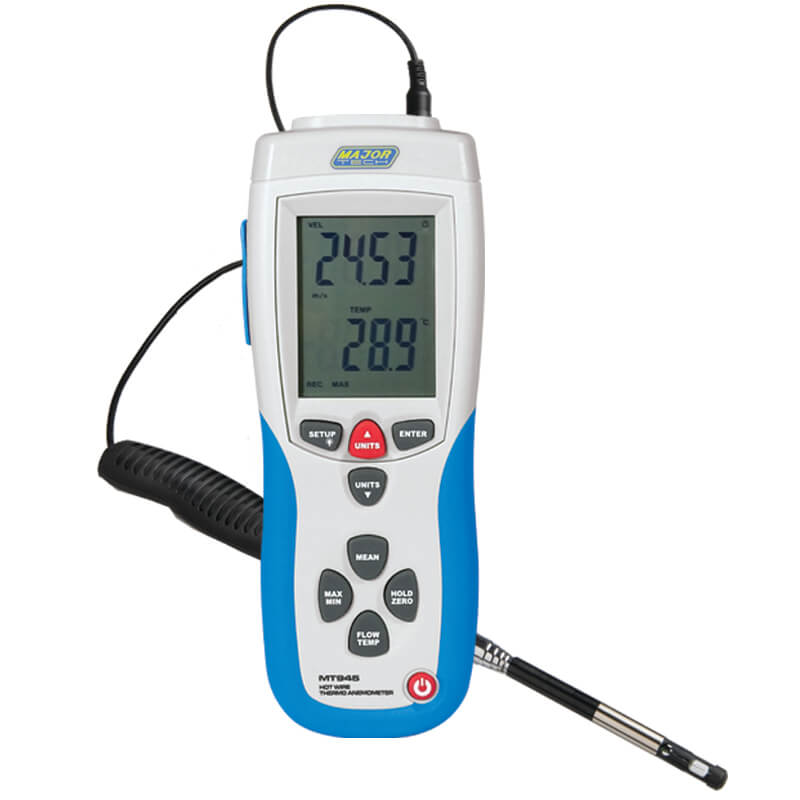Anemometer Innovations: The Most Recent Modern Technology for Wind Speed Dimension
Anemometer Innovations: The Most Recent Modern Technology for Wind Speed Dimension
Blog Article
All You Need to Understand About Anemometers: Just How They Work, Why They Matter, and Where to Use Them
Anemometers, however often overlooked in the world of scientific tools, play an important role in numerous fields, supplying important insights into wind rate and air movement patterns. Understanding the auto mechanics behind these gadgets is important for anybody seeking to harness the power of this data. From meteorologists tracking weather patterns to engineers developing frameworks with wind loads in mind, the applications of anemometers are varied and significant. As we look into the ins and outs of anemometer technology, we will uncover the inner operations of these devices, their value, and the key considerations when picking the right anemometer for certain applications.

Anemometer Fundamentals
A crucial instrument made use of to gauge wind rate and direction, the anemometer plays a crucial duty in meteorology and numerous industries. An anemometer typically contains 3 or four mugs that revolve in the wind, a vane that directs into the wind, and sensors to track the activities or turnings. By calculating the rotations or activities over a certain amount of time, the anemometer can figure out wind speed. The vane helps establish wind instructions by aiming right into the wind, offering valuable information for weather condition projecting, aeronautics, maritime procedures, environmental surveillance, and wind power applications.
There are numerous types of anemometers offered, including cup anemometers, vane anemometers, hot-wire anemometers, and sonic anemometers, each with its one-of-a-kind functions and applications. Cup anemometers are commonly utilized for standard wind speed dimensions, while vane anemometers are liked for directional dimensions. Hot-wire anemometers are appropriate for reduced airspeeds, and sonic anemometers are suitable for high-precision measurements in study and industrial settings. Understanding the basics of anemometers is necessary for accurate wind data collection and evaluation throughout different markets.
Principles of Anemometer Operation
Building on the foundational understanding of anemometer essentials, the concepts of anemometer operation clarify the mechanics behind wind speed and instructions dimensions. Cup anemometers, for circumstances, have three or more mugs that catch the wind, triggering them to spin quicker as the wind speed rises. Hot-wire anemometers count on a warmed wire that cools down as wind passes over it, with the price of cooling down identifying the wind speed.
Significance of Anemometers
The relevance of anemometers in weather forecasting and different markets can not be overemphasized. Anemometers play an essential function in determining wind speed and direction, providing vital data for climate forecasting, climate researches, environmental surveillance, and aviation operations. Meteorologists depend on anemometers to gather precise wind information, helping them understand weather condition patterns, predict tornados, and concern timely warnings to the general public. In sectors such as construction, farming, renewable power, and maritime operations, anemometers are made use of to enhance procedures, make sure safety, and increase performance. Wind farm operators utilize anemometers to examine wind problems and make the most of electrical energy manufacturing from wind generators. In the maritime market, anemometers help ship navigation by offering real-time wind details to captains, assisting them make notified choices to guarantee risk-free trips. On the whole, anemometers are indispensable devices that add significantly to safety, effectiveness, and educated decision-making in weather forecasting and a wide range of industries.
Applications Across Different Industries
Applications of anemometers cover throughout diverse markets, showcasing their convenience and utility past meteorology. In the renewable resource field, anemometers play a vital role in evaluating wind conditions for wind ranch placements, guaranteeing ideal energy production. Industries like building and mining use anemometers to keep track of wind speeds, critical for security methods, especially when working at heights or in open-pit mines where next page strong winds can posture risks. Anemometers are also indispensable in the aeronautics sector, helping pilots in understanding airspeed and wind instructions for safe liftoffs and landings. The maritime sector gain from anemometers for ship navigation, aiding seafarers prepare for climate changes and change paths as necessary. In farming, anemometers help farmers in managing crop spraying by supplying real-time information on wind rate to stay clear of drift. Anemometers find applications in Cooling and heating systems to enhance air flow and improve energy effectiveness in structures. The diverse use instances of anemometers emphasize their significance throughout numerous Read Full Article sectors, highlighting their essential role in boosting operational security and performance (anemometer).

Choosing the Right Anemometer for Your Demands
Picking the suitable anemometer customized to your certain demands is vital for obtaining accurate wind speed and direction dimensions. When choosing an anemometer, take into consideration factors such as the intended application, required dimension range, environmental conditions, and desired functions. For general objectives, a cup anemometer is ideal for determining wind speed, while a vane anemometer supplies wind direction data. Hot-wire anemometers are optimal for reduced airspeed measurements, and ultrasonic anemometers use high precision and sturdiness.

Verdict
In conclusion, anemometers play an important duty in gauging wind rate and instructions across various markets. It is important to consider the relevance of anemometers in order to make informed choices when picking the most appropriate device for determining wind problems.
There are various kinds of anemometers offered, consisting of cup anemometers, vane anemometers, hot-wire anemometers, and sonic anemometers, each with its special attributes and applications. Cup anemometers are generally used for standard wind speed dimensions, while vane anemometers are favored for directional measurements. Hot-wire anemometers are suitable for low airspeeds, and sonic anemometers are optimal for high-precision measurements in study and commercial setups.Building on the foundational understanding of anemometer essentials, the look at this site concepts of anemometer operation illuminate the mechanics behind wind speed and direction measurements. For basic objectives, a mug anemometer is ideal for measuring wind rate, while a vane anemometer offers wind direction information.
Report this page